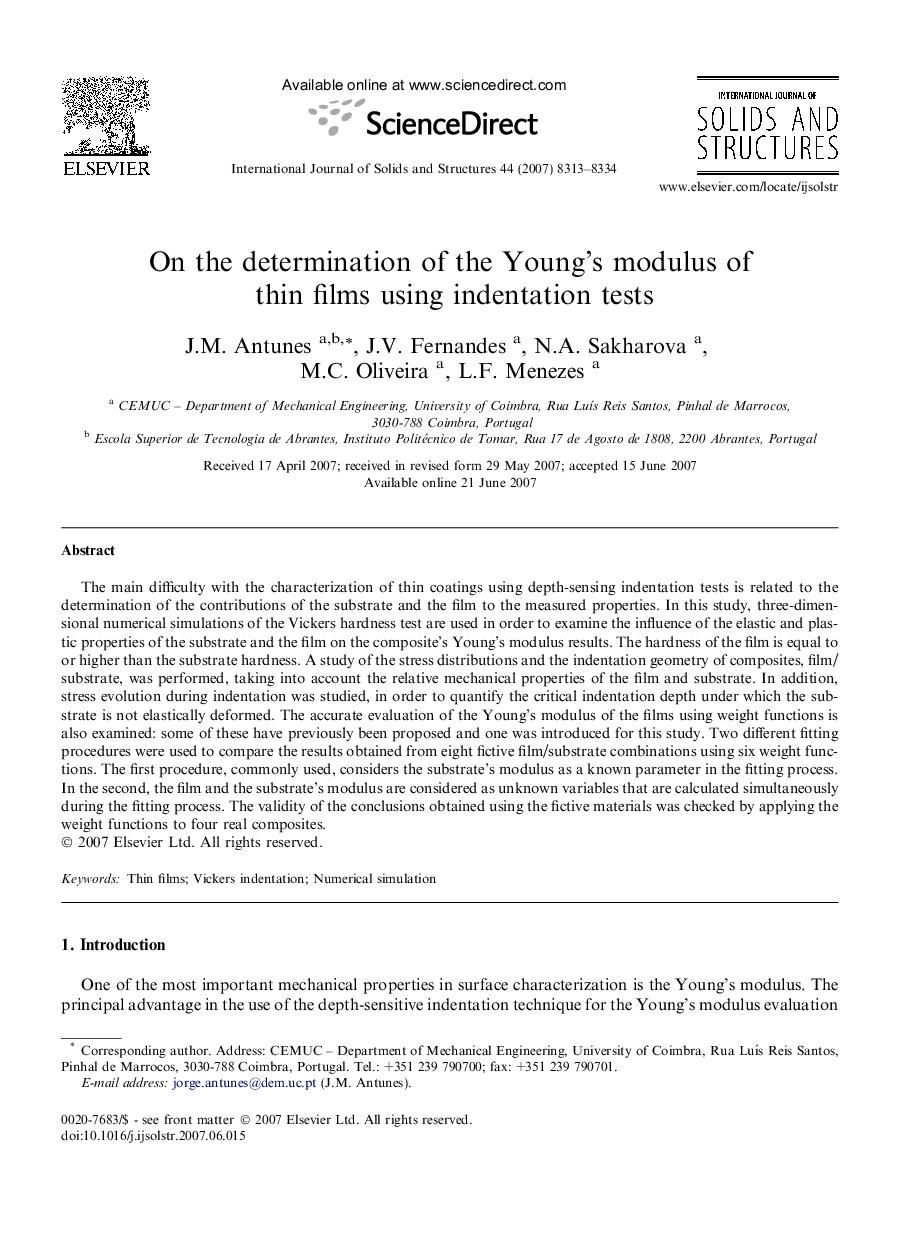| Article ID | Journal | Published Year | Pages | File Type |
|---|---|---|---|---|
| 280258 | International Journal of Solids and Structures | 2007 | 22 Pages |
The main difficulty with the characterization of thin coatings using depth-sensing indentation tests is related to the determination of the contributions of the substrate and the film to the measured properties. In this study, three-dimensional numerical simulations of the Vickers hardness test are used in order to examine the influence of the elastic and plastic properties of the substrate and the film on the composite’s Young’s modulus results. The hardness of the film is equal to or higher than the substrate hardness. A study of the stress distributions and the indentation geometry of composites, film/substrate, was performed, taking into account the relative mechanical properties of the film and substrate. In addition, stress evolution during indentation was studied, in order to quantify the critical indentation depth under which the substrate is not elastically deformed. The accurate evaluation of the Young’s modulus of the films using weight functions is also examined: some of these have previously been proposed and one was introduced for this study. Two different fitting procedures were used to compare the results obtained from eight fictive film/substrate combinations using six weight functions. The first procedure, commonly used, considers the substrate’s modulus as a known parameter in the fitting process. In the second, the film and the substrate’s modulus are considered as unknown variables that are calculated simultaneously during the fitting process. The validity of the conclusions obtained using the fictive materials was checked by applying the weight functions to four real composites.
